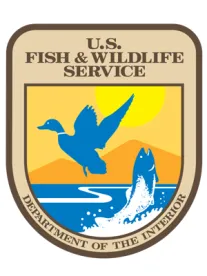A proposed Ohio wind farm cleared another legal hurdle last week when Judge Leon of the United States District Court for the District of Columbia upheld the U.S. Fish and Wildlife Service's (“FWS”) issuance of an incidental take permit authorizing the “take” of endangered Indiana bats. The court dismissed plaintiff’s Endangered Species Act (“ESA”) and National Environmental Policy Act claims with prejudice, foreclosing re-litigation of the issue and bringing an added level of certainty to a project that has been in development since 2006.
In Union Neighbors United , Inc. v. Jewell, 1:13-cv-01435, a community group opposed to the 52-turbine, 130-megawatt Buckeye wind proposal challenged the FWS’ issuance of an incidental take permit, which would allow the project to “take” up to 130 endangered Indiana bats over the life of the project – or approximately 5.2 bats per year for 25 years. The Indiana bat has been endangered since 1967 due to population declines and loss of winter habitat, and is now at additional risk due to “white nose syndrome," a naturally-occurring fungal affliction currently decimating bat populations throughout the region. Although the proposed Buckeye wind project is not located in an area where Indiana bats live, the bats travel through the project area at certain times of year and may collide with the project’s turbines.
In the instant case, Union Neighbors United alleged that the FWS improperly applied the ESA by failing to select the project alternative that minimized the take of Indiana bats to the “maximum amount that can be implemented by the applicant” before applying mitigation measures to offset any take that could not be avoided in the project proposal. The court disagreed, finding that nothing in the ESA compelled the FWS to engage in such an inflexible two-step process. Instead, the court pointed to the agency’s Habitat Conservation Planning and Incidental Take Permit Handbook, which “permits [the FWS] to place less emphasis on whether a program is the 'maximum that can practically be implemented by the applicant,' if an applicant can first demonstrate that the minimization and mitigation [measures] provide substantial benefits to the species.” The Buckeye wind project’s habitat conservation plan, which is the product of close collaboration between the FWS and the project developer, requires variable turbine cut-in speeds to minimize the potential for bat collisions, robust bat monitoring and reporting, and the acquisition, protection, and improvement of over 200 acres of Indiana bat habitat. The court upheld the agency’s determination that these minimization and mitigation measures 'fully offset' any impact that the project may have on Indiana bats. Accordingly, the court found that "[o]nce the impact was fully mitigated, it was not necessary for [the agency] to determine whether more mitigation was possible, or whether the impact could possibly be minimized further."
Although the proposed Buckeye wind farm faces additional litigation obstacles in Ohio state court, the successful outcome of this case highlights the advantages of working collaboratively with the FWS throughout permit process to develop and establish mitigation measures and best management practices that effectively minimize project impacts on threatened and endangered species.





 />i
/>i